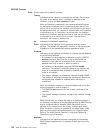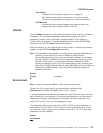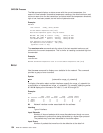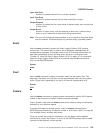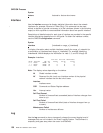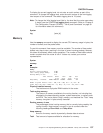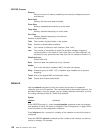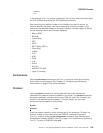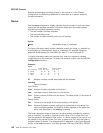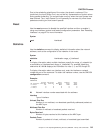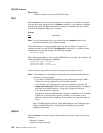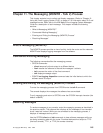
+network 3
X.25>
In the example, the X.25> prompt is displayed. You can then view information about
the X.25 interface by entering the X.25 operating commands.
After identifying the interface number of the interface you want to monitor, for
interface-specific information, see the corresponding monitoring chapter in this
manual for the specified network or link-layer interface. Console support is offered
for the following network and link-layer interfaces:
v Bisync (BSC)
v Ethernet
v Frame Relay
v PPP
v SDLC
v SDLC Relay (SRLY)
v Token-Ring
v V.25bis
v X.25
v ATM
v ISDN
v V.34
v Dial-In
v Dial-Out
v Multilink PPP (MP)
v Layer-2-Tunneling
Performance
Use the performance command at the Config> prompt to enter the monitoring
environment for performance. See “Chapter 14. Configuring and Monitoring
Performance” on page 215 for more information.
Protocol
Use the protocol command to communicate with the router software that
implements the network protocols installed in your router. The protocol command
accesses a protocol’s command environment. After you enter this command, the
prompt of the specified protocol appears. From the prompt, you can enter
commands that are specific to that protocol.
Syntax:
protocol
prot#
Enter the protocol number or short name as part of the command. To obtain the
protocol number or short name, enter the CONFIG command environment
(Config>), and then enter the list configuration command. See “Accessing the
Configuration Process, CONFIG (Talk 6)” on page 14 for instructions on accessing
Config>. To return to GWCON, enter exit.
GWCON Process
Chapter 10. The Operating/Monitoring Process (GWCON - Talk 5) and Commands 139
|
|




